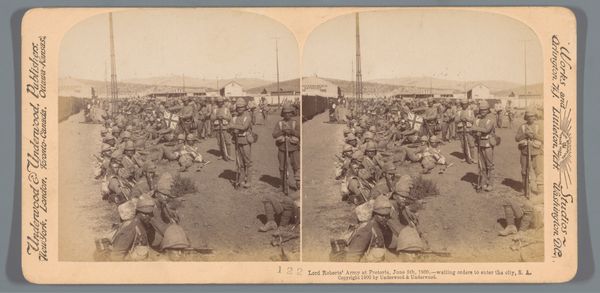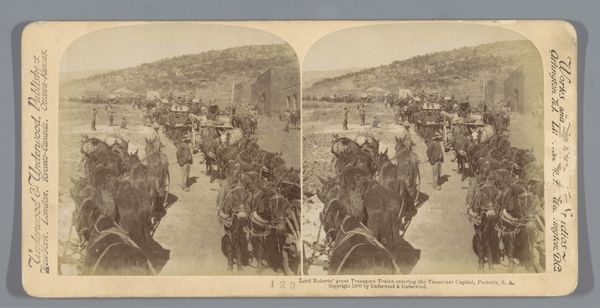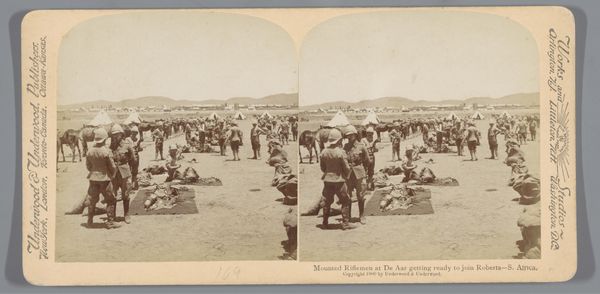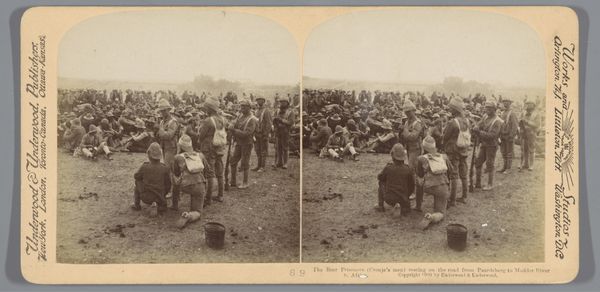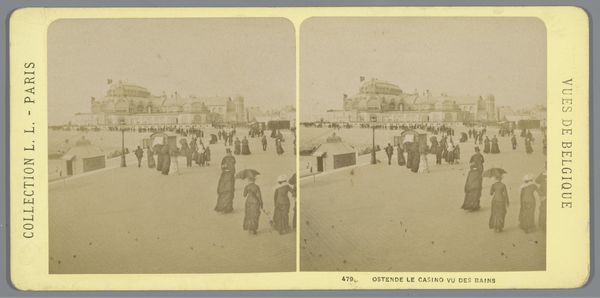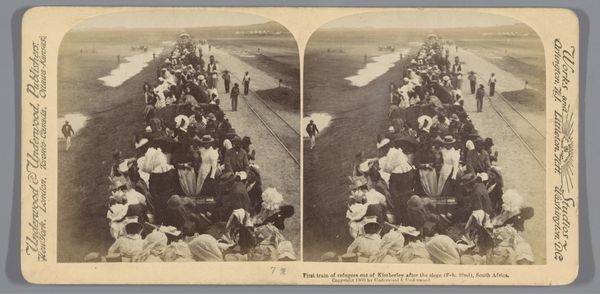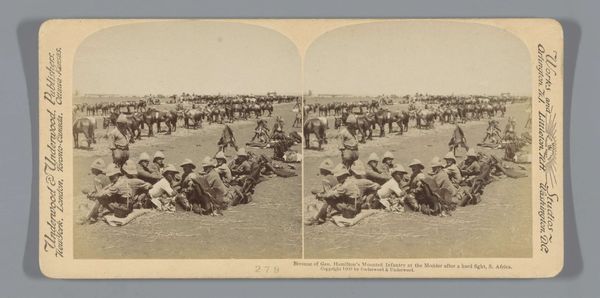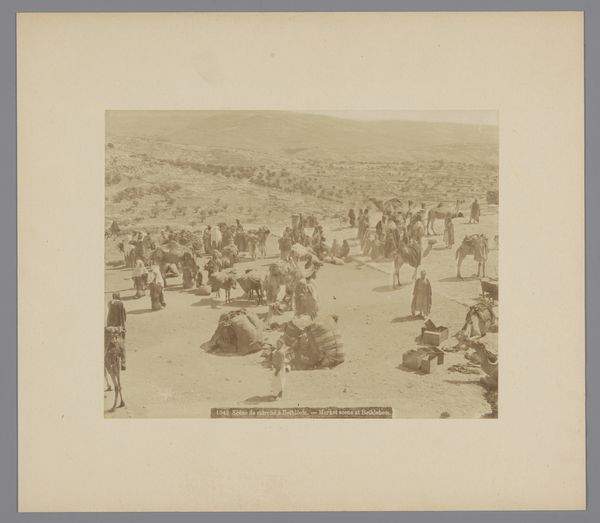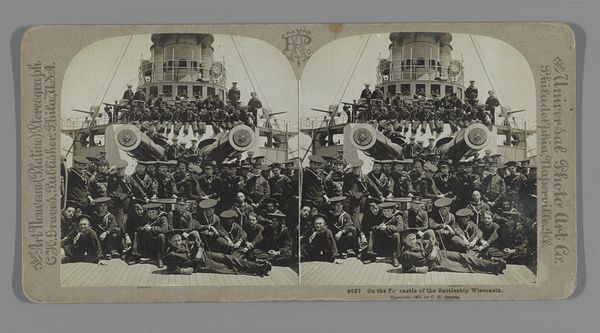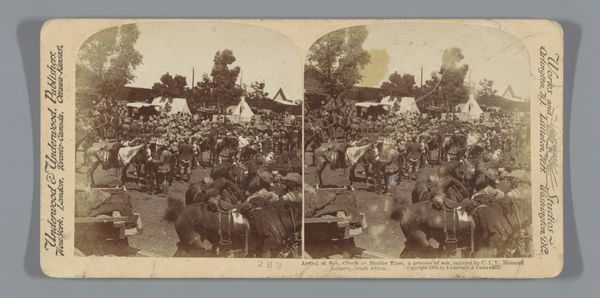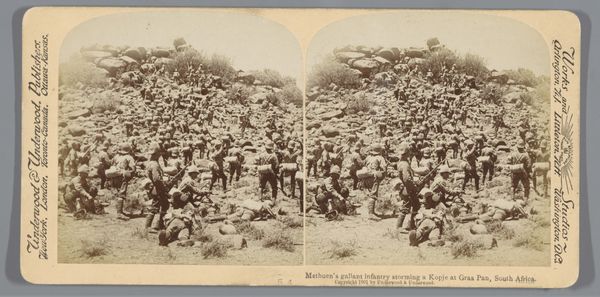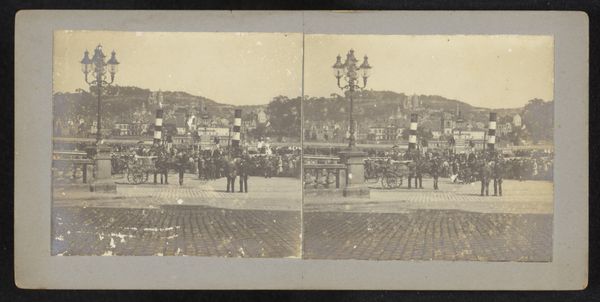
photography, albumen-print
#
water colours
#
landscape
#
photography
#
orientalism
#
genre-painting
#
albumen-print
#
realism
Dimensions: height 88 mm, width 177 mm
Copyright: Rijks Museum: Open Domain
Curator: Looking at this albumen print, likely made between 1900 and 1905, the eye is immediately drawn to the sheer multitude of figures gathered. Editor: It’s overwhelming! A sea of people and livestock stretching across a dusty landscape. There’s a certain somberness in the sepia tones, almost as if this marketplace exists outside of time. Curator: Precisely! This is “Veemarkt in het Dal van Hinnom, nabij Jeruzalem,” or “Cattle Market in the Valley of Hinnom, near Jerusalem.” Given the subject and time, we can certainly consider the print to be within the tradition of Orientalist photography. Note the staging, the clear demarcation of peoples… Editor: So it's not just a neutral record. These scenes catered to European tastes, fulfilling specific fantasies and expectations of the “East.” The details, though… those robes, the headdresses, the variety of animals… Curator: Those details function symbolically as much as they depict reality. Cattle markets, especially in such religiously significant locations as the Valley of Hinnom, represented a place where ritual and daily life converge. For centuries, the Valley has had associations with sacrifice and judgment… seeing trade enacted in this location has deep implications for the viewer, then and now. Editor: Ah, so even in a bustling market scene, there are undercurrents of deeper meanings related to sacrifice and the ancient past. I wonder what impact this photograph had on its original viewers. Did they ponder these complex histories, or simply admire the exotic scenery and perceived authenticity? Curator: That tension, between superficial admiration and the deeper, almost atavistic connection to religious histories, is exactly the point! The Valley of Hinnom was the city garbage dump in biblical times, which contributes even further to the complex symbolism… Editor: So it's not just trade and exchange, but also the cycle of life and decay reflected here, brought to life by how this artist frames his subject within very specific cultural ideas and understandings of the landscape. It leaves us considering our own role in viewing this tableau. Curator: Yes, and the photograph, in a sense, performs its own act of symbolic exchange. Editor: Food for thought.
Comments
No comments
Be the first to comment and join the conversation on the ultimate creative platform.
